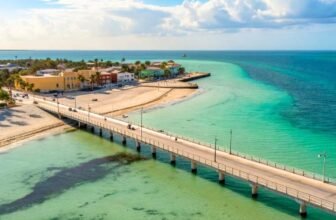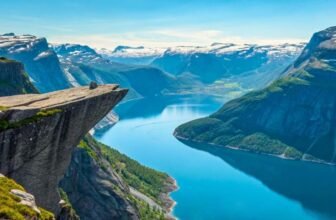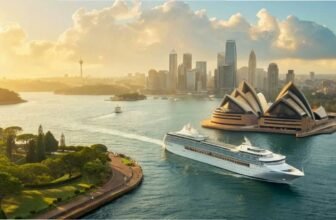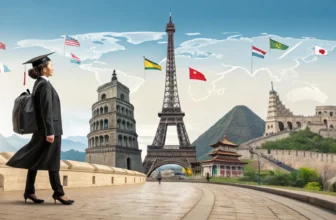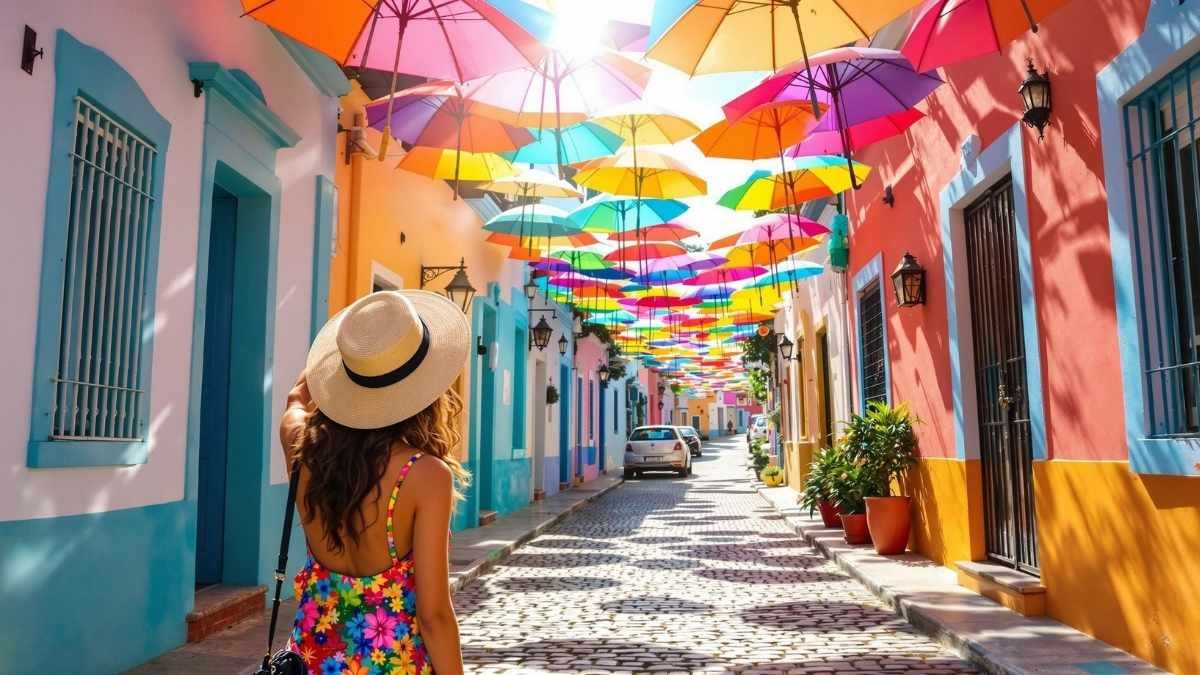
Now and then, you stumble into a town that doesn’t just look different—it feels different. Streets hum with unexpected colors, buildings glow like brushstrokes, and turning a corner can feel like stepping into a dream you didn’t know you were having.
These places don’t whisper for your attention—they shout in brilliant blues, neon pinks, and sunset oranges. They lift your mood without asking permission. Whether you’re a photographer, a traveler chasing joy, or someone in need of visual therapy, these towns offer more than beauty—they offer a new lens on the world. Let’s walk straight into the color.
1. Chefchaouen, Morocco
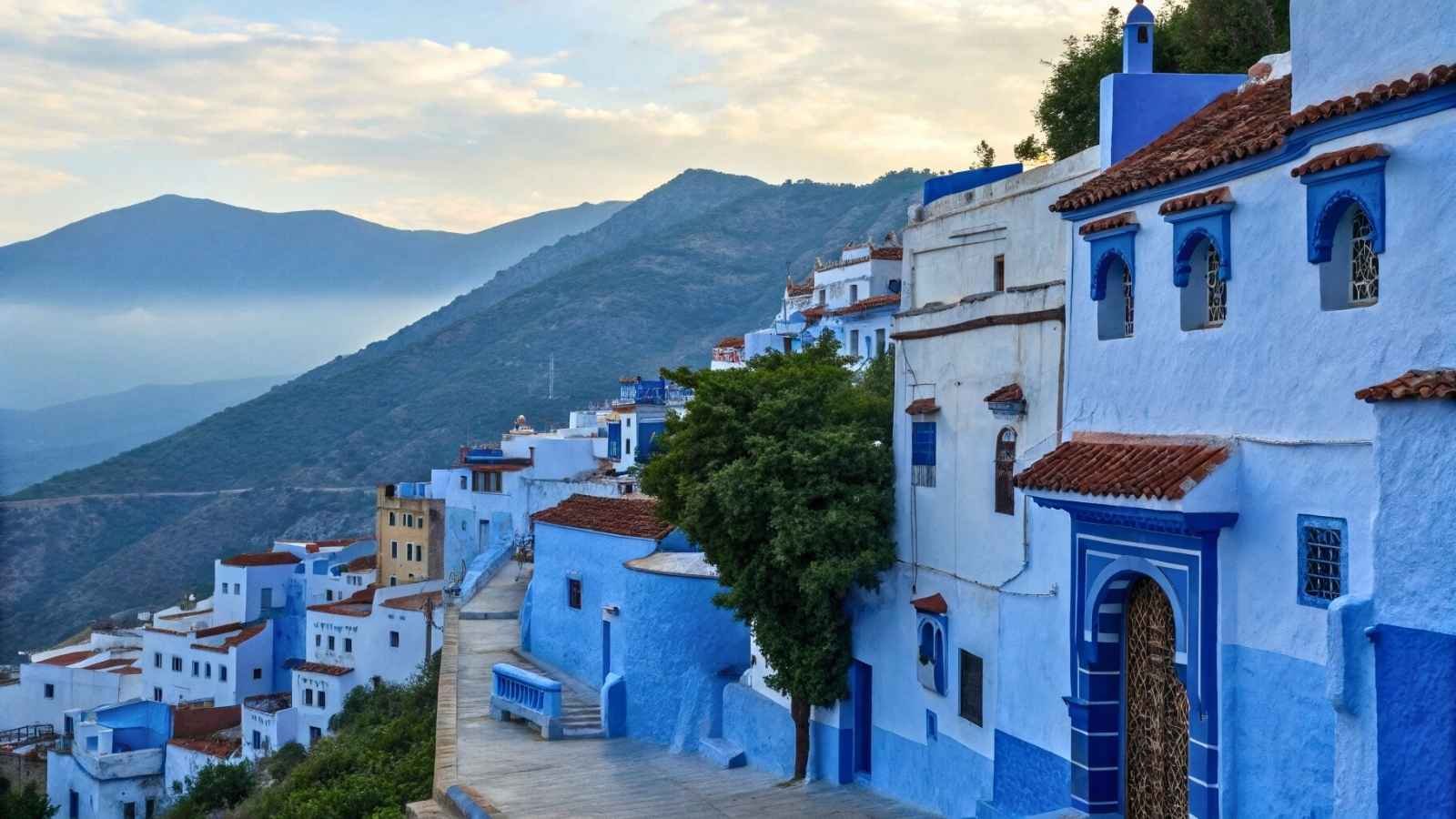
Nestled in the Rif Mountains, Chefchaouen feels like it was dipped entirely in indigo. Almost every building in this small Moroccan town is painted in shades of blue, from sky to cobalt to lavender. The color palette isn’t just for aesthetics—locals say it keeps mosquitoes away and symbolizes the sky and heaven in Jewish tradition. But whether spiritual or practical, the result is a place that feels surreal, serene, and deeply photogenic.
Wandering through its narrow alleyways, you’ll pass cats curled up on blue steps, handwoven rugs hanging from balconies, and friendly shopkeepers offering mint tea and hand-dyed textiles. The scent of spices and the sound of fountains create a sensory experience that’s just as vivid as the visuals. The medina (old town) is small enough to explore on foot in a day, but its charm will make you want to linger.
It’s not just a pretty face—Chefchaouen is also a gateway to hiking in the surrounding mountains, including Talassemtane National Park. And despite its growing fame, it retains a quiet rhythm that feels a world away from Morocco’s busier cities.
Quick Travel Tips:
- Best months to visit: March to May, September to November (mild temps and fewer tourists)
- Currency: Moroccan Dirham (MAD)
- Closest airport: Tangier Ibn Battuta Airport (about 2 hours away by car)
- Local must-try: Goat cheese, and bissara (a hearty fava bean soup)
- Good to know: Dress modestly; it’s a conservative town
2. Burano, Italy
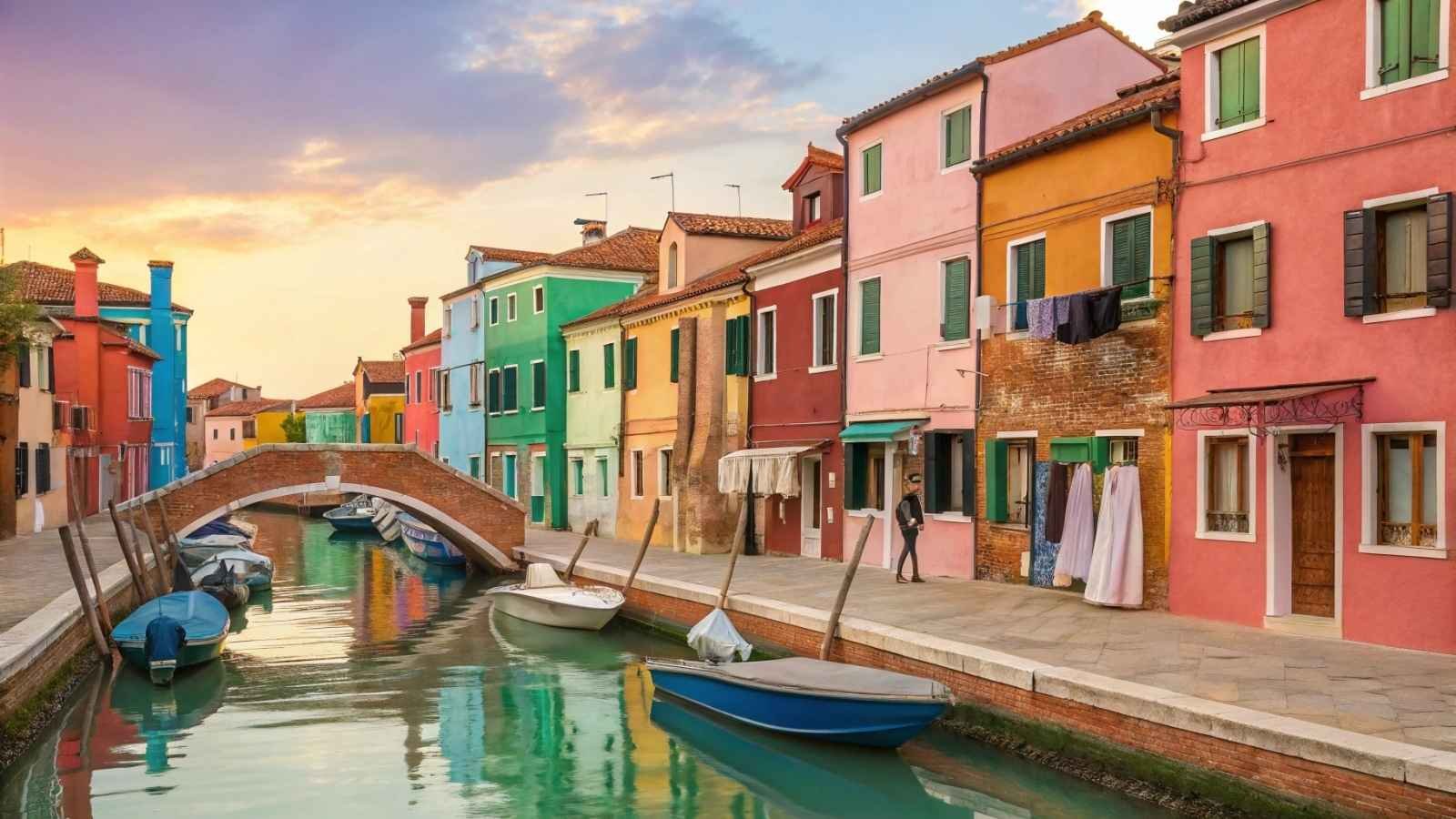
If Venice is romance, Burano is joy. This tiny island in the Venetian Lagoon is a burst of color that hits you the moment you step off the vaporetto (water bus). Every home is painted in bright hues—bubblegum pink, lemon yellow, seafoam green, and tangerine orange—with no two buildings the same. The result is a kaleidoscope reflected perfectly in the calm canals that lace through town.
There’s a legend that fishermen painted their houses so they could find their way home through the fog—a practical idea turned accidental masterpiece. Today, it feels more like you’ve stepped into a whimsical children’s book. The town is famous for its centuries-old lace-making tradition, and you’ll find older women still crafting it by hand in sunlit doorways.
Unlike Venice, Burano is blissfully quiet. It doesn’t have big museums or grand cathedrals, but that’s part of its charm. You’re here to wander, soak in the color, eat fresh seafood by the canal, and take photos you’ll never need a filter for.
Quick Travel Tips:
- Best months to visit: April to June, September (skip peak summer crowds)
- Currency: Euro (€)
- Closest airport: Venice Marco Polo Airport
- Local must-try: Risotto de gò (made with a local lagoon fish)
- Good to know: It’s a 40–45 minute boat ride from Venice—perfect for a slow half-day trip
3. Guanajuato, Mexico
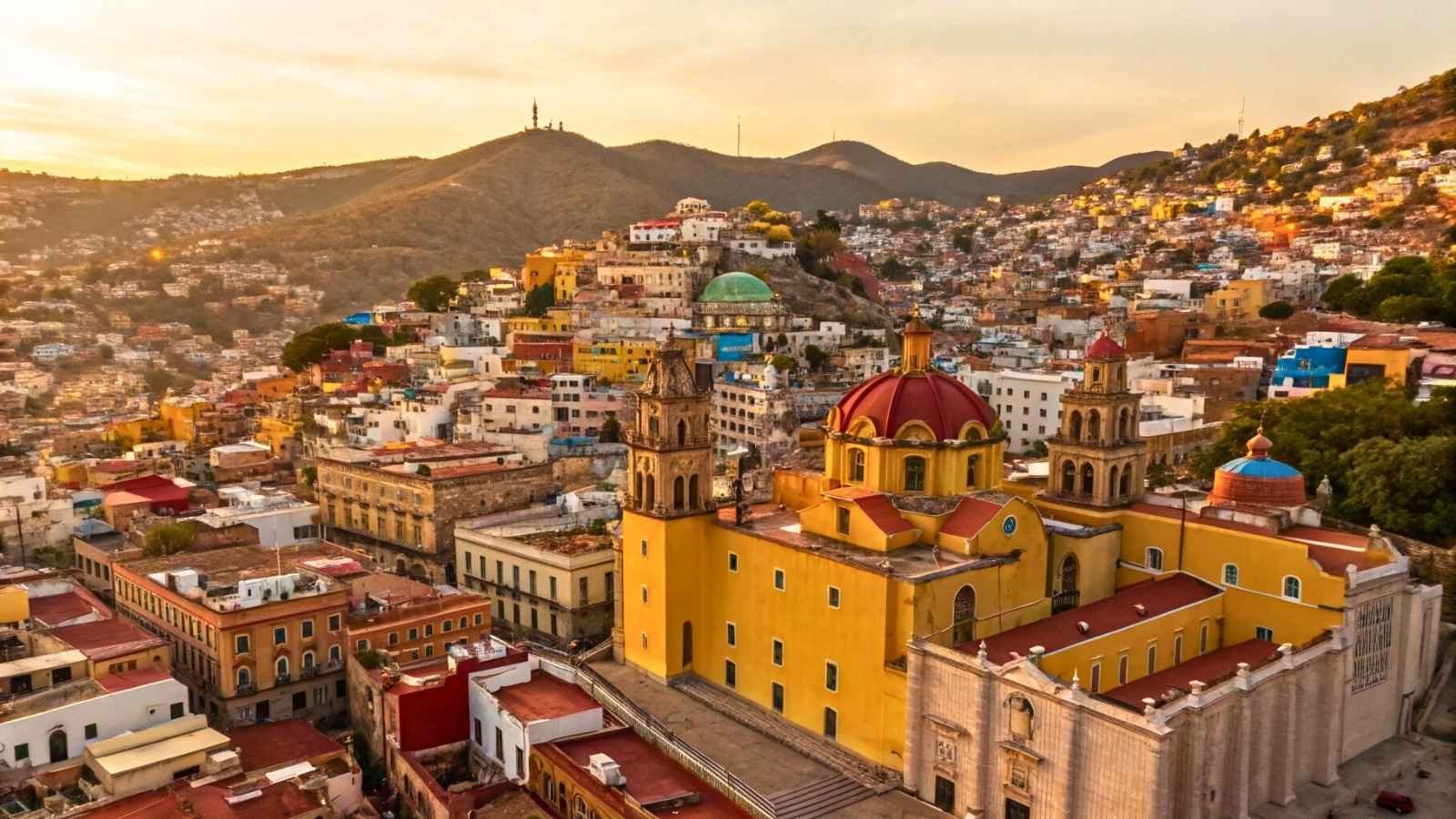
Guanajuato is like a living canvas of sunlit colors splashed across a colonial mountain valley. This UNESCO World Heritage site is famous for its maze-like streets and houses painted in every imaginable shade—candy red, mango orange, turquoise, lime green, and beyond. The town’s historic core is a tangled, lively place where music pours from alleyways and every plaza hums with local life.
Originally founded as a silver mining town, Guanajuato’s wealth built stunning baroque churches and mansions, now tucked between bold buildings that defy the neutral tones of modern cities. You’ll stumble on lively street performances, steps leading to panoramic viewpoints, and the famous Callejón del Beso—a romantic alley barely wide enough for two people to kiss across balconies.
Despite its popularity, Guanajuato doesn’t feel overrun. There’s an authentic energy here, especially during festivals like Cervantino when the streets burst with art, theatre, and music. It’s a colorful heart with deep cultural roots.
Quick Travel Tips:
- Best months to visit: October (for Cervantino), or March to May
- Currency: Mexican Peso (MXN)
- Closest airport: Del Bajío International Airport (BJX)
- Local must-try: Enchiladas Mineras (miner’s enchiladas)
- Good to know: The underground road system helps reduce traffic on the scenic surface streets
4. Jodhpur, India
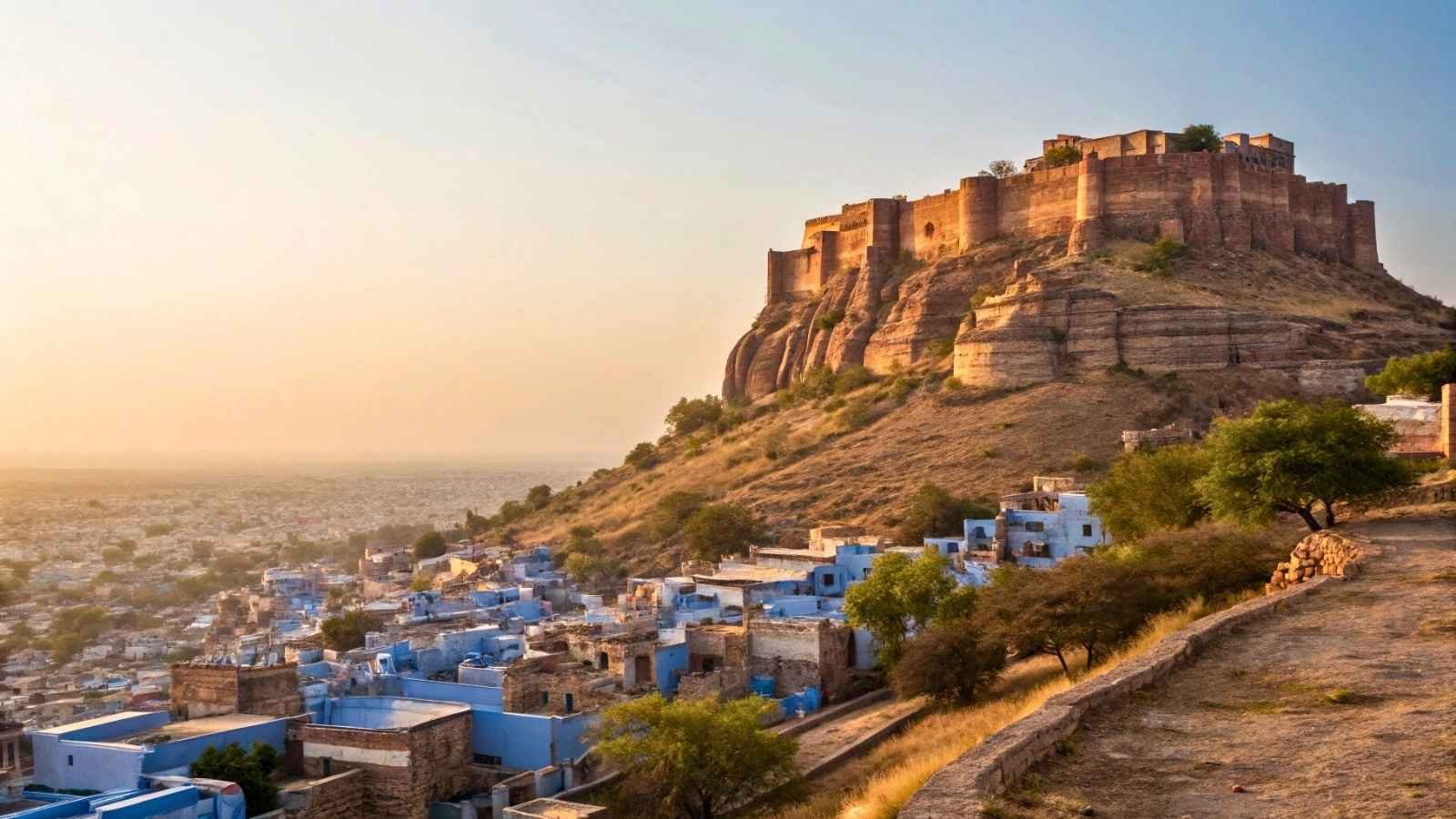
Known as the “Blue City,” Jodhpur is a visual feast of cobalt homes clustered at the foot of the massive Mehrangarh Fort. From above, it looks like the desert sky melted into the town itself. Unlike some color-themed places that paint a few facades, Jodhpur is unapologetically soaked in blue, a color that traditionally signified the homes of Brahmins (priests) but has since become the town’s signature.
Jodhpur’s color isn’t just for show. The blue paint is believed to help keep homes cool and repel insects, essential in the desert heat. Walk its labyrinthine streets and you’ll discover hidden courtyards, street cows wandering past spice stalls, and the rhythmic clang of metalworkers forging traditional wares.
Beyond its color, Jodhpur offers a strong dose of Rajasthani culture—elephant-headed door knockers, saris that shimmer in the sun, and rooftop cafes where you sip chai while watching the fort turn golden at sunset. It’s intense, loud, beautiful, and unforgettable.
Quick Travel Tips:
- Best months to visit: November to February (pleasant weather)
- Currency: Indian Rupee (INR)
- Closest airport: Jodhpur Airport
- Local must-try: Makhaniya lassi and mirchi bada (spicy chili fritters)
- Good to know: The old city is a maze—don’t fight it, just wander and explore
5. Bo-Kaap, Cape Town, South Africa
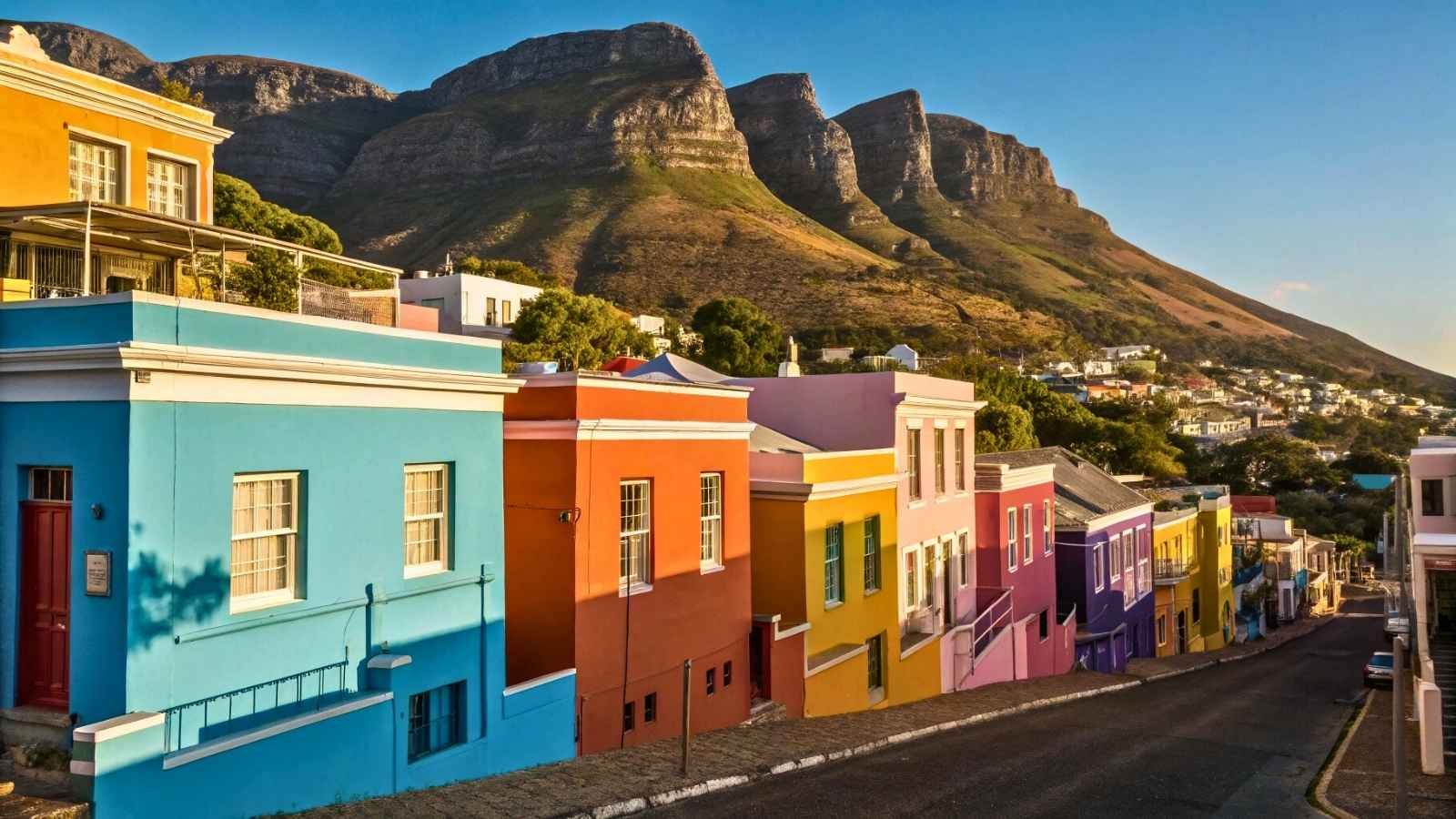
Perched on the slopes of Signal Hill, Bo-Kaap is Cape Town’s most colorful neighborhood and one of its most historic. Formerly known as the Malay Quarter, Bo-Kaap is a blend of brightly painted homes and Cape Dutch architecture, with every street looking like a celebration in full swing—hot pinks, teal blues, canary yellows, and electric purples all crowding together in joyous harmony.
But Bo-Kaap’s color runs deeper than paint. The area is rich in Muslim and Cape Malay heritage, with a past marked by struggle and resilience. Residents began painting their homes in vibrant colors after apartheid as a statement of freedom and cultural pride. Today, it’s not only a feast for the eyes but a neighborhood where history breathes from every cobblestone.
Walk the cobbled streets, visit the Bo-Kaap Museum, and savor the smell of local spices wafting from open kitchen windows. The food here—curry, samosas, and koeksisters (spiced syrup-soaked doughnuts)—is as bold as the buildings themselves.
Quick Travel Tips:
- Best months to visit: October to April (dry, sunny, and warm)
- Currency: South African Rand (ZAR)
- Closest airport: Cape Town International Airport
- Local must-try: Cape Malay curry and bobotie
- Good to know: Wear comfy shoes—those hills are steep but worth the climb for the views
6. Valparaíso, Chile
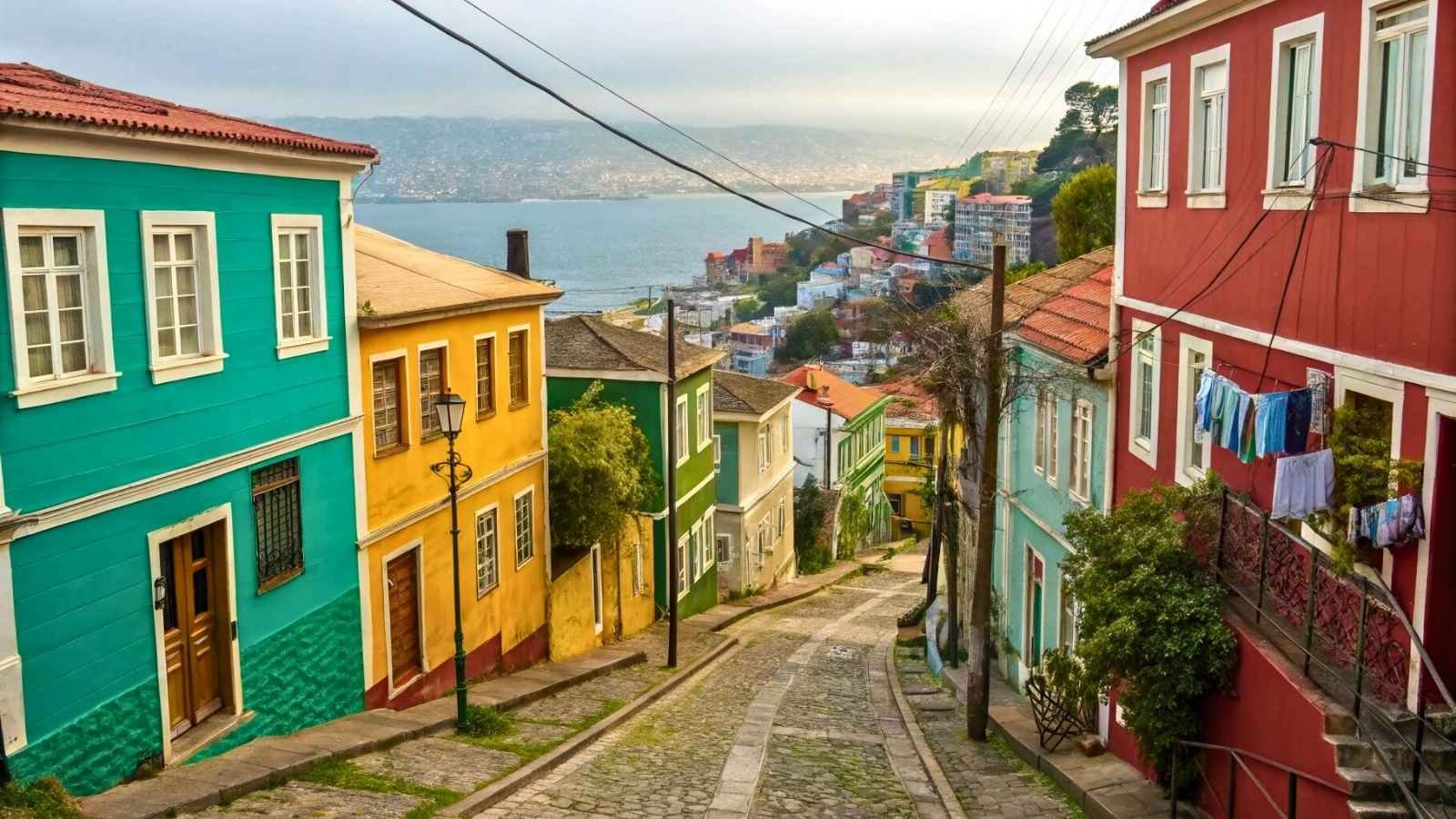
Valparaíso isn’t polished—and that’s what makes it stunning. A wild, creative mess of color, the city is built across dozens of steep hills rising from the Pacific, and each is covered in boxy houses painted in mismatched hues, splashed with some of the most breathtaking street art in the world. No two stairways look the same, and every turn reveals a wall-sized mural, a painted cat, or a political slogan transformed into art.
Once a gritty port town, Valparaíso has reinvented itself as Chile’s bohemian soul, attracting artists, musicians, poets, and dreamers. The spirit of Pablo Neruda lingers in the air (his quirky former home is now a museum perched above the sea), and the entire town pulses with a kind of creative chaos. Funiculars rattle up hillsides, stray dogs nap in doorways, and everywhere you go, color.
It’s a place where imperfection is part of the beauty, where chipped paint and tangled cables don’t take away from the experience—they enhance it. Whether you’re sipping wine on a rooftop or exploring a back alley, Valparaíso rewards curiosity.
Quick Travel Tips:
- Best months to visit: November to March (summer season)
- Currency: Chilean Peso (CLP)
- Closest airport: Santiago International Airport (2 hours by car or bus)
- Local must-try: Chorrillana (a massive plate of fries, beef, eggs, and onions—local favorite)
- Good to know: Wear good walking shoes—cobblestones + hills = serious cardio
7. Willemstad, Curaçao
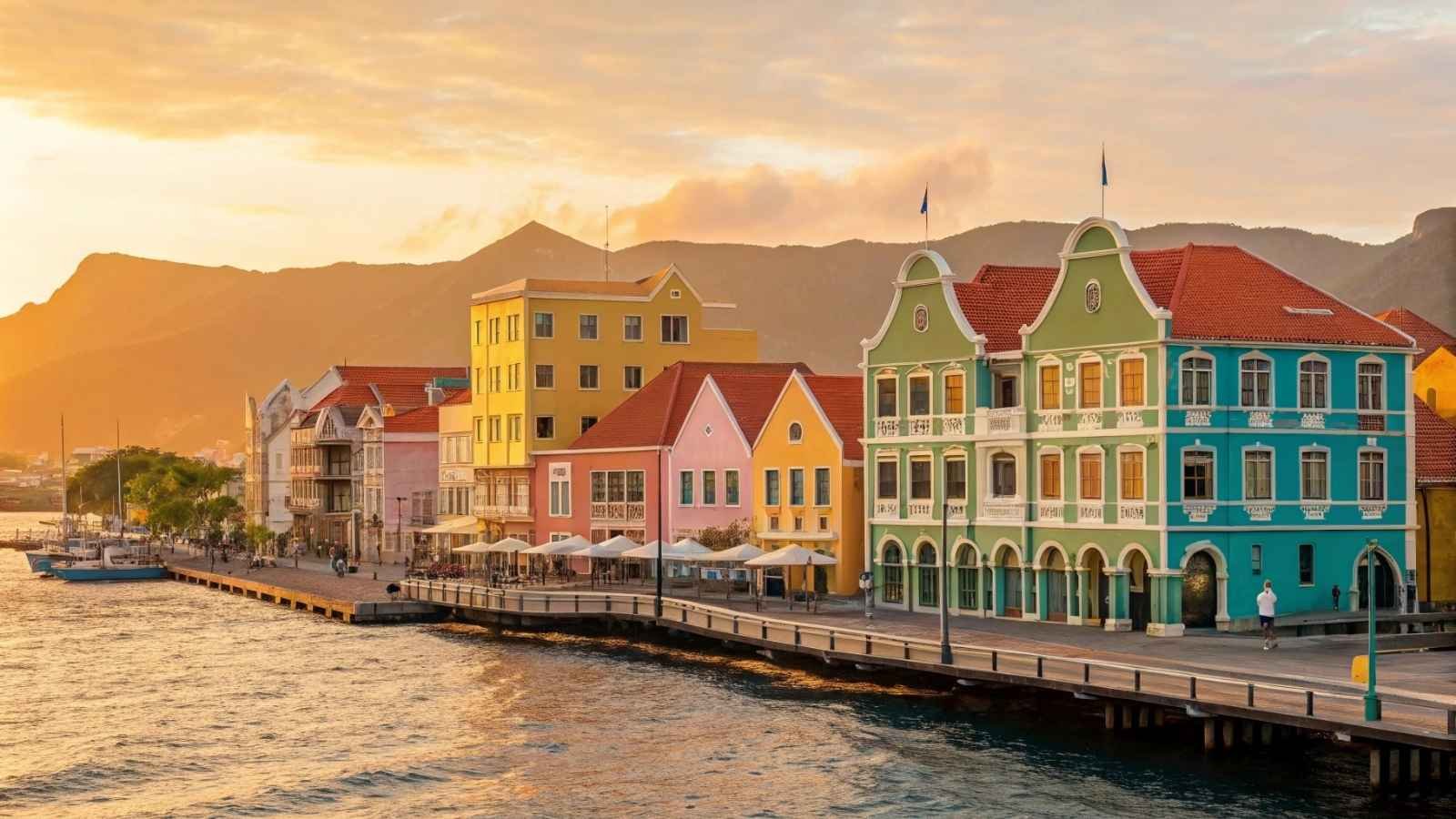
The capital of Curaçao, Willemstad, looks like a little slice of Amsterdam that wandered into the Caribbean—and promptly got doused in sunshine and paint buckets. Its Dutch colonial buildings line the waterfront in an eye-popping array of pastels: mint greens, soft oranges, butter yellows, and flamingo pinks that reflect in the crystal-blue harbor like a watercolor dream.
It’s not just photogenic—it’s UNESCO-protected, and for good reason. The town’s Old Town is split into two by the iconic Queen Emma Bridge, a floating pedestrian bridge that swings open to let ships pass. On one side, you have Punda, with its colorful shopping streets and historic forts; on the other, Otrobanda, full of lively street murals and local eats.
The colors here feel as warm as the climate, and Willemstad’s Afro-Caribbean culture, music, and cuisine round out the sensory feast. Spend a day here and you’ll feel like you’ve walked into a travel postcard come to life.
Quick Travel Tips:
- Best months to visit: December to May (dry season)
- Currency: Netherlands Antillean Guilder (ANG), but USD is widely accepted
- Closest airport: Curaçao International Airport
- Local must-try: Keshi yena (cheese-stuffed meat dish)
- Good to know: Dutch, Papiamento, and English are all commonly spoken
8. Júzcar, Spain
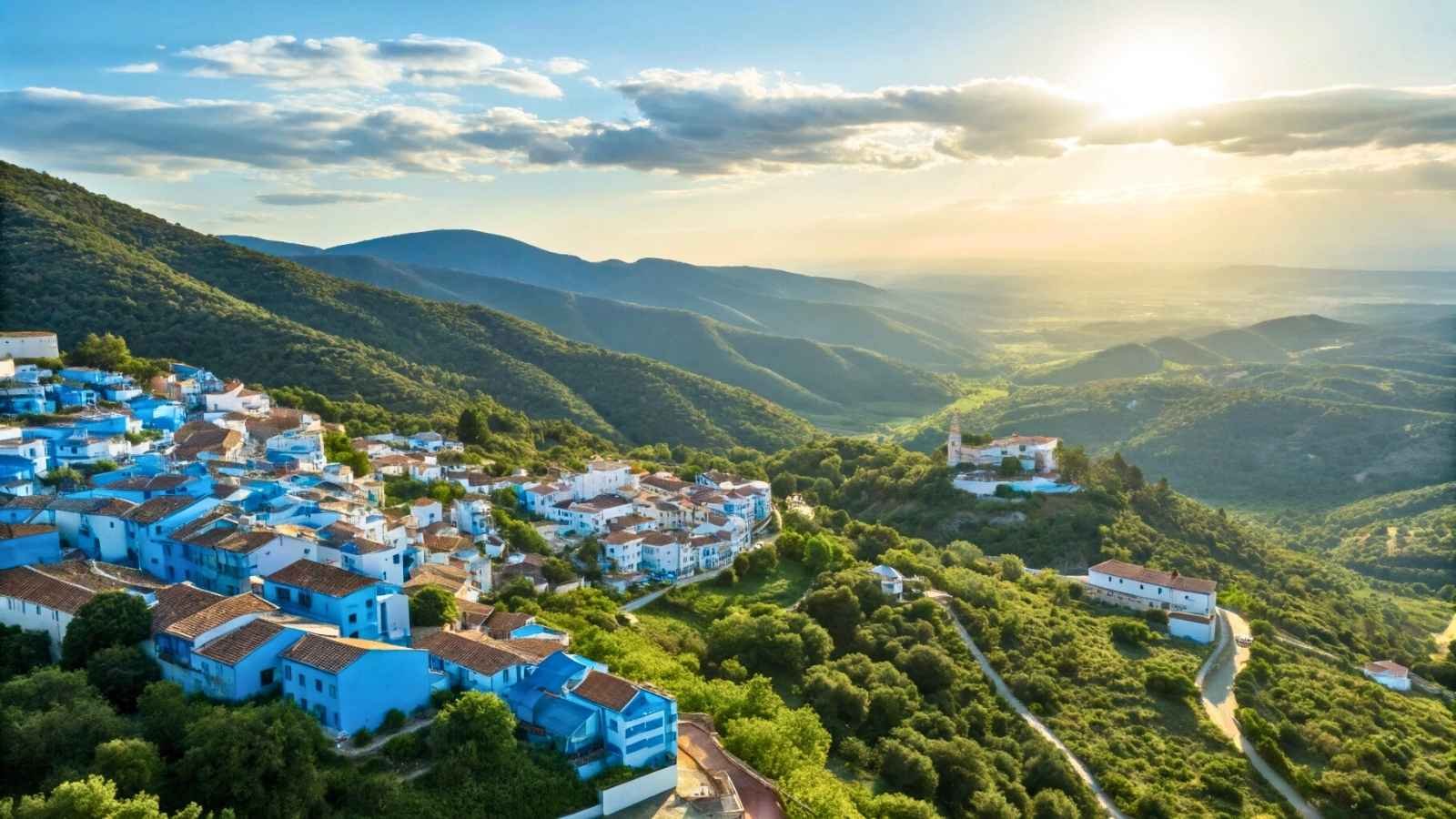
Here’s one you wouldn’t expect: the entire town of Júzcar is painted in bright blue, from chimney to sidewalk. It wasn’t always this way—this tiny village in southern Spain was once another whitewashed Andalusian town, until Sony chose it in 2011 for the premiere of The Smurfs movie. As part of the promotion, they painted the whole place blue. And when the promotion ended? The residents voted to keep the color.
The result is bizarre, charming, and unique. You’re walking through a cartoon come alive, surrounded by whimsical murals, mushroom-shaped buildings, and even Smurf statues. But underneath the playful surface lies a genuine Spanish village with cobbled streets, mountain views, and real people living their daily lives.
Júzcar is nestled in the Serranía de Ronda, making it an excellent offbeat stop for hikers and road-trippers exploring southern Spain. It’s not polished like the touristy Costa del Sol, but that’s part of its offbeat allure.
Quick Travel Tips:
- Best months to visit: April to June, or September to early November
- Currency: Euro (€)
- Closest airport: Málaga–Costa del Sol Airport (about 1.5–2 hours away)
- Local must-try: Churros con chocolate after a morning hike
- Good to know: The town leans into its quirky fame—there are even Smurf-themed festivals
9. Kampung Pelangi, Indonesia
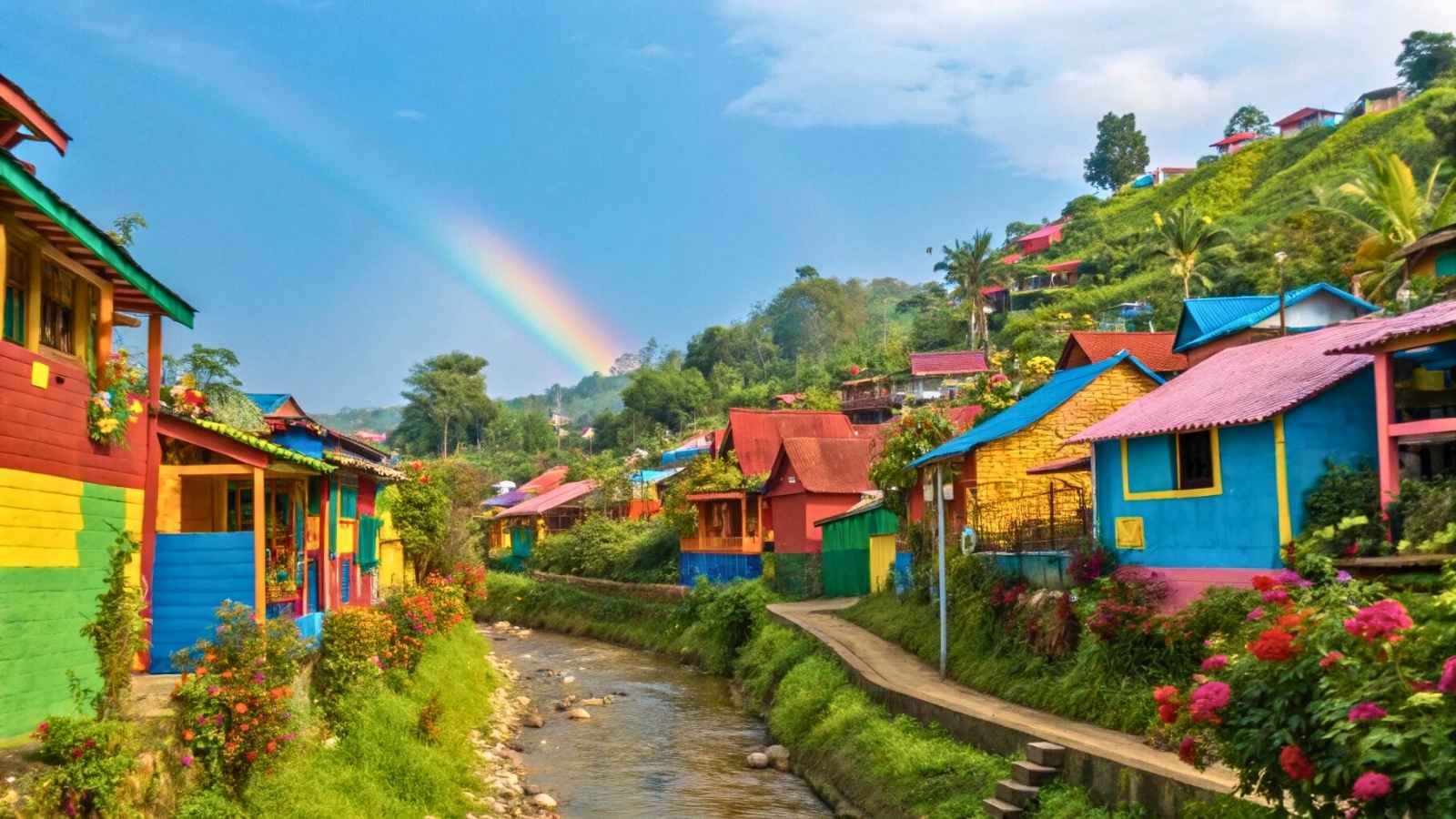
It’s amazing what a little paint and a big idea can do. In Central Java, the village of Kampung Pelangi went from neglected to world-famous after the community came together to transform their entire town into a rainbow. Hundreds of houses were splashed with vivid colors, murals, and geometric patterns, turning this hillside neighborhood into a technicolor labyrinth.
Originally a government-backed beautification project, Kampung Pelangi (literally “Rainbow Village”) has become a symbol of local pride and grassroots revitalization. It’s a selfie paradise, yes—but it’s also proof of what art and community can accomplish together.
Walking through the narrow alleyways, you’ll pass swirling staircases, painted rooftops, and friendly residents proud of what they’ve created. It’s not touristy in the traditional sense—you’re visiting someone’s home, after all—but that makes the experience more personal.
Quick Travel Tips:
- Best months to visit: May to September (dry season in Java)
- Currency: Indonesian Rupiah (IDR)
- Closest airport: Ahmad Yani International Airport in Semarang
- Local must-try: Lumpia Semarang (spring rolls stuffed with bamboo shoots and chicken)
- Good to know: Respect the locals’ space—it’s a neighborhood, not a theme park
10. Old San Juan, Puerto Rico
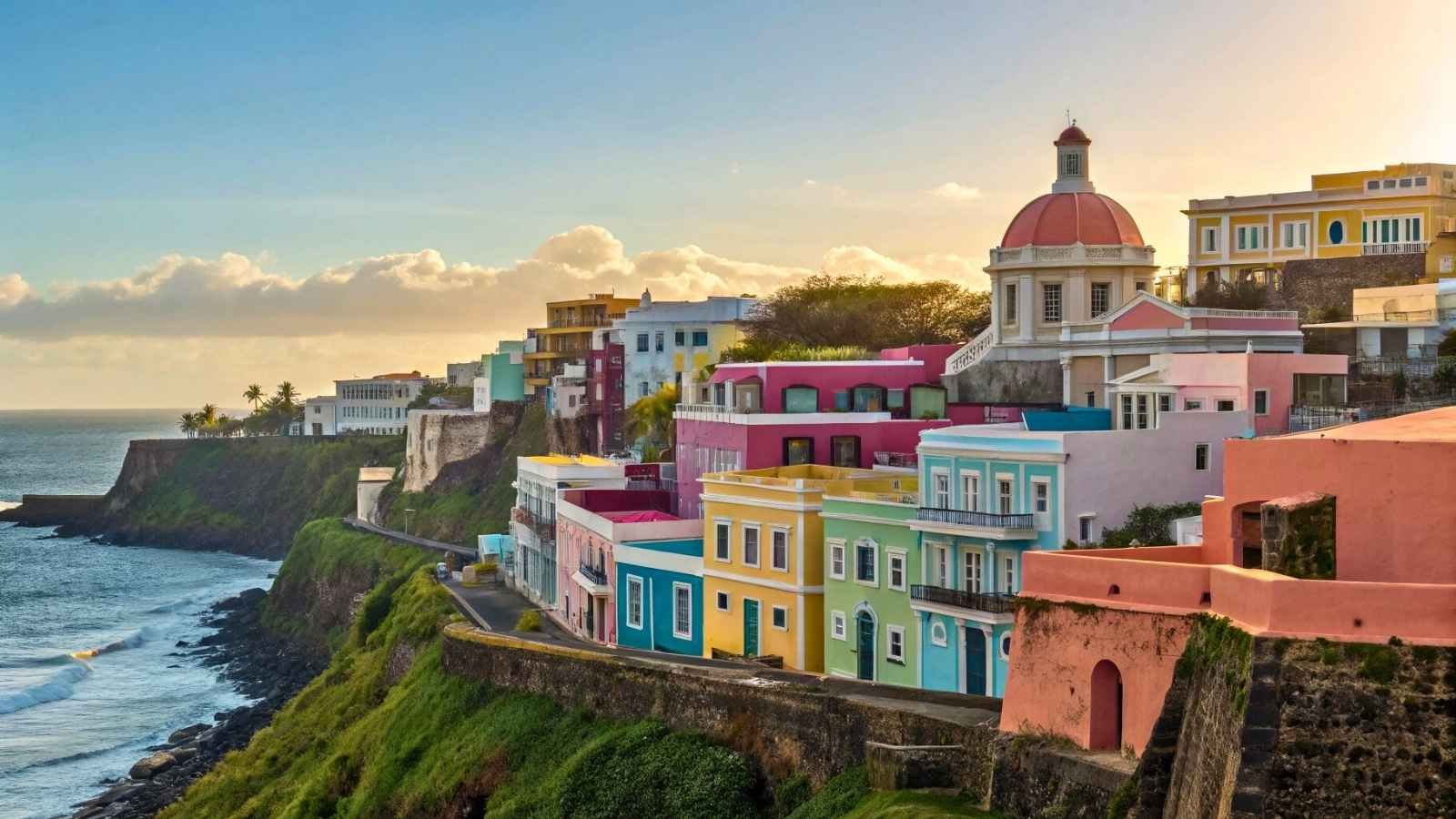
Old San Juan isn’t just vibrant—it’s radiant with history. The narrow cobblestone streets are lined with colonial-era buildings painted in sun-faded pastels—think coral pinks, lemon yellows, sea-blues, and mint greens—with wrought iron balconies draped in bougainvillea. It’s the kind of place where time seems to linger, and color adds a softness to centuries-old stone.
Every corner of Old San Juan offers a contrast—Spanish forts towering over turquoise bays, salsa music bouncing off centuries-old walls, and shops filled with modern art tucked inside colonial structures. You’re not just seeing beauty; you’re feeling the rhythm of Puerto Rico itself.
The town is compact and walkable, perfect for slow exploration. Watch the sunset from Castillo San Felipe del Morro, snack on piraguas (shaved ice), or just soak in the layered textures of a town that wears its soul on its walls.
Quick Travel Tips:
- Best months to visit: December to April (sunny and dry)
- Currency: US Dollar ($)
- Closest airport: Luis Muñoz Marín International Airport
- Local must-try: Mofongo (mashed plantains with garlic and meat or seafood)
- Good to know: U.S. citizens don’t need a passport to visit


